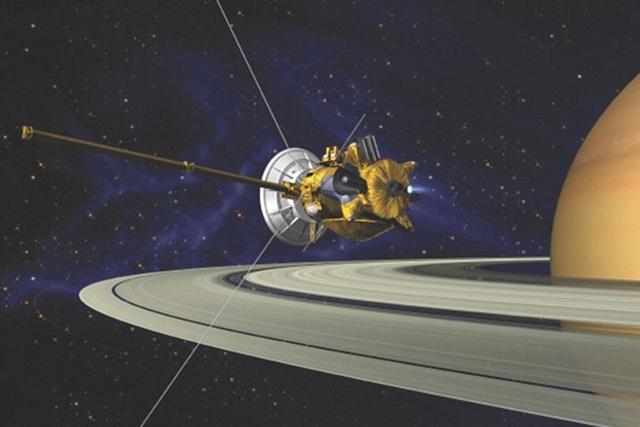
This is Scientific American 60 Seconds Space. I'm Clara Moskowitz. Got a minute?
歡迎大家收聽科學美國人,太空系列。我是克拉拉。
After orbiting Saturn for 10 years, NASA’s Cassini probe is ready for its last hurrah.
在土星軌道上運行了十年的“卡西尼”土星探測器在為最后的工作做努力。
The spacecraft has already revolutionized our knowledge of the ringed planet and its moons. Cassini discovered spewing water-ice geysers on the moon Enceladus. It uncovered lakes, rivers and evidence for ocean waves on the moon Titan. It captured Saturn’s majestic rings in unprecedented detail, and even revealed thepresence of previously unseen rings.
自從“卡西尼”號抵達土星系統后,取得了許多突破性的發現,改革了人們對土星及其行星的認知。比如發現了衛星Enceladus上存在著“羽狀噴流”并在“泰坦”上發現了“湖泊”和巨大風暴。“卡西尼”還捕捉到了關于土星周圍的“光環”的詳盡情況,甚至發現了新的“碎片環”。
Now Cassini is gearing up for its final act. In 2016 the probe will embark on a series of dips and passes that should offer a whole new view of the Saturn system. The probe will dive between Saturn and its innermost ring 22 times over the course of about a year. It will climb high above the planet’s north pole, and skirt near the plumes jetting from Enceladus.
如今,“卡西尼”就要結束它的工作了。到2016年,“卡西尼”通過進入土星附近的軌道會為人類提供全方面的土星系統信息。探測器將穿過環繞衛星登陸土星,其里程長達22光年。從北極生氣后,“卡西尼"會盡量避免衛星Enceladus上釋放的羽狀噴流。
NASA recently solicited public suggestions for what to call this closing mission segment. The winning name, it was just announced, is “Grand Finale.” The mission will end in September 2017, when Cassini will have a dramatic death by plunging into Saturn’s atmosphere. What an exit!
美國國家航空航天局向社會征詢意見,該如何命名這一收尾工作。排名第一的是 “悲壯的終曲”。這項任務將于2017年9月結束,科學家將控制探測器墜入土星大氣層。“壯哉,壯哉!”











